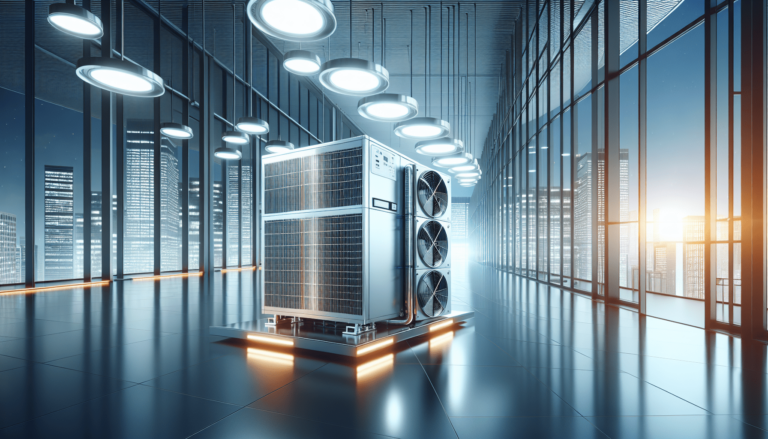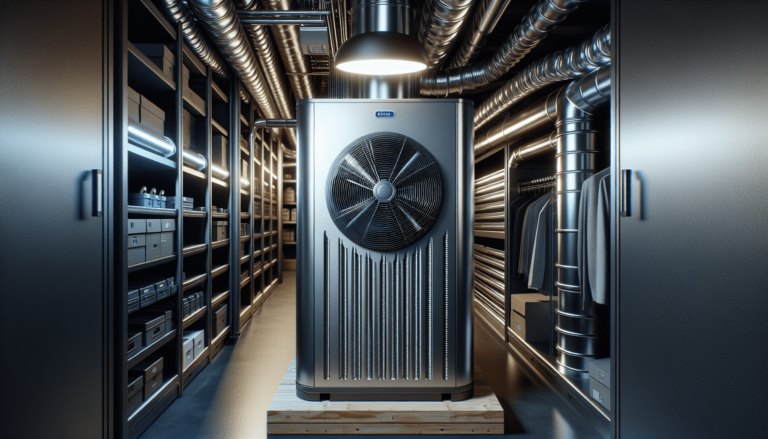

HVAC Services
Get Professional Repairs From The Area's Trusted HVAC Technicians. Ask About Our Services! We Offer Professional Heating & Cooling System Repairs And Guarantee Long-Lasting Results.
Got Question? Call us: (850) 678-2665Financing
Commercial HVAC Settings: Best Practices For Energy Efficiency
Discover the best practices for optimizing energy efficiency in commercial HVAC settings. Save energy, reduce your carbon footprint, and improve cost-effectiveness with expert advice.

Looking to maximize energy efficiency in your commercial HVAC system? Look no further! In this article, we will share with you the best practices for achieving optimal energy efficiency in commercial HVAC settings. Whether you own a large office space, a retail store, or any other commercial establishment, these tips and recommendations will help you save energy and reduce your carbon footprint. With advice from experts at Tempacure Heating and Air Conditioning, you can ensure that your HVAC system is running at its best while minimizing energy consumption. Get ready to make your HVAC system more eco-friendly and cost-effective!
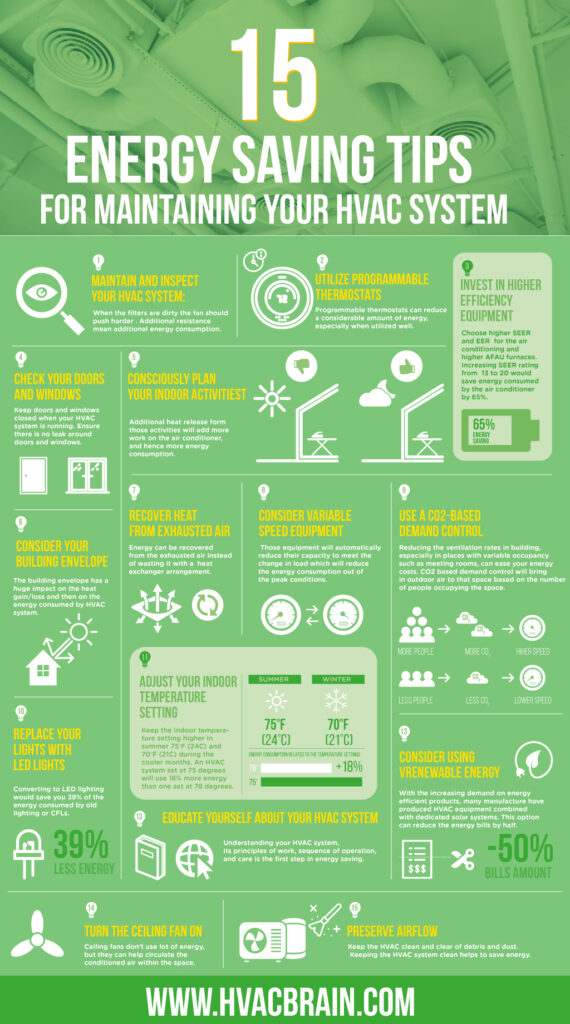
This image is property of www.hvacbrain.com.
Optimizing Temperature Settings
Understanding Ideal Temperature Range
Maintaining the ideal temperature range is crucial for optimizing energy efficiency in commercial HVAC systems. The ideal indoor temperature for most commercial spaces is typically between 72 and 76 degrees Fahrenheit (22-24 degrees Celsius). This range provides a comfortable environment for occupants while also minimizing energy consumption.
Setting Temperature Zones
One effective strategy for optimizing temperature settings is to divide the building into different temperature zones. This allows for more precise control over the HVAC system and ensures that energy is not wasted in areas that do not require as much cooling or heating. By implementing temperature zoning, you can tailor the comfort levels in different areas of the building to meet specific occupancy needs.
Using Programmable Thermostats
Programmable thermostats are a valuable tool for optimizing temperature settings and energy efficiency. These thermostats allow you to set different temperature settings for different times of the day or week, ensuring that the HVAC system is only operating when necessary. By programming the thermostat to reduce cooling or heating during unoccupied periods, you can achieve significant energy savings without sacrificing comfort.
Managing Ventilation
Importance of Proper Ventilation
Proper ventilation is essential for maintaining a healthy and comfortable indoor environment. It helps remove stale air, odors, and pollutants while introducing fresh outside air. Adequate ventilation also plays a crucial role in preventing the buildup of harmful substances like carbon monoxide and volatile organic compounds (VOCs).
Utilizing Outdoor Air Economizers
Outdoor air economizers are an effective way to optimize ventilation and energy efficiency. These systems use sensors to monitor outdoor air conditions and automatically adjust the amount of fresh air brought into the building. By leveraging cooler outdoor air when conditions allow, the HVAC system can reduce the need for mechanical cooling, resulting in energy savings.
Using Demand-Controlled Ventilation
Demand-controlled ventilation (DCV) systems further enhance energy efficiency by adjusting the ventilation rates based on occupancy levels or indoor air quality. Using sensors or occupancy detectors, DCV systems can vary the amount of ventilation provided in real-time. This ensures that ventilation rates are optimized for the actual occupancy, reducing unnecessary energy consumption.
Efficient Airflow Control
Balancing Air Distribution
Achieving a balanced air distribution is crucial for maintaining optimal comfort and energy efficiency. Properly balanced airflow ensures that warm and cold air is evenly distributed throughout the building, minimizing temperature fluctuations. Regularly inspecting and adjusting dampers, registers, and diffusers can help achieve and maintain balanced airflow.
Monitoring and Adjusting VAV Systems
Variable air volume (VAV) systems are commonly used in commercial HVAC applications. These systems adjust the airflow based on the cooling or heating needs of each zone. Regular monitoring and adjustment of VAV systems can help ensure they are operating efficiently and delivering the right amount of conditioned air to each zone, avoiding unnecessary energy use.
Maintaining Clean Air Filters
Clean air filters are essential for efficient HVAC system operation. Clogged or dirty filters restrict airflow, increasing energy consumption and reducing the system’s ability to maintain desired temperature levels. Regularly inspecting and replacing air filters helps ensure optimal airflow and energy efficiency.
Effective Equipment Scheduling
Optimal Daily and Weekly Schedules
Implementing optimal daily and weekly schedules for HVAC equipment operation is key to energy efficiency. By carefully planning the operation of equipment based on occupancy patterns and building usage, energy waste can be minimized. Adjusting temperature setpoints and operating hours during unoccupied periods or weekends can lead to significant energy savings without sacrificing comfort.
Utilizing Occupancy Sensors
Occupancy sensors are an excellent tool for effective equipment scheduling. These sensors detect occupancy levels in specific areas or rooms and can automatically adjust temperature settings or activate/deactivate HVAC equipment accordingly. By utilizing occupancy sensors, you can ensure that conditioned air is only provided to occupied spaces, reducing energy waste.
Implementing Setback Strategies
Setback strategies involve temporarily adjusting temperature settings during unoccupied periods to conserve energy. By setting the HVAC system to operate at a slightly higher temperature during cooling seasons or lower temperature during heating seasons when the building is unoccupied, energy consumption can be reduced significantly. However, it is important to ensure that the setback period is not excessively long to avoid impacting occupant comfort upon their return.

This image is property of actionac.net.
Utilizing Energy Recovery Systems
Types of Energy Recovery Systems
Energy recovery systems capture waste heat or coolness from exhaust air and use it to pre-condition incoming fresh air. There are two common types of energy recovery systems: heat recovery ventilation (HRV) and energy recovery ventilation (ERV). HRV systems transfer heat between the outgoing and incoming air streams, while ERV systems transfer both heat and moisture.
Benefits of Energy Recovery
Energy recovery systems offer several benefits for commercial HVAC systems. By utilizing waste heat or coolness, these systems can reduce the load on cooling and heating equipment, resulting in energy savings. Additionally, energy recovery systems aid in maintaining balanced humidity levels in the building, enhancing occupant comfort and indoor air quality.
Ensuring Proper Maintenance
Regular maintenance is crucial for ensuring the optimal performance and longevity of energy recovery systems. It is important to clean or replace filters regularly to prevent the buildup of contaminants. Additionally, inspecting and cleaning heat exchangers, fans, and motors ensures that the system operates at peak efficiency and avoids energy waste.
Implementing Lighting Controls
Utilizing Natural Light
Maximizing the use of natural light can significantly reduce energy consumption associated with artificial lighting. Utilize windows, skylights, or light shelves to bring in natural daylight, reducing the need for electric lighting during daylight hours. Additionally, optimizing the use of window treatments such as blinds or shades can help control glare and heat gain, improving occupant comfort.
Installing Occupancy Sensors for Lighting
Installing occupancy sensors for lighting is an effective way to optimize energy efficiency. These sensors detect occupancy in a space and automatically turn on or off the lights based on activity levels. By ensuring that lights are only illuminated when needed, energy waste from unnecessary lighting can be minimized.
Using High-Efficiency Lighting Solutions
Utilizing high-efficiency lighting solutions, such as LED (light-emitting diode) fixtures, can significantly reduce energy consumption. LED lighting not only consumes less energy than traditional incandescent or fluorescent lighting but also has a longer lifespan, reducing maintenance costs. Incorporating dimmers or daylight harvesting controls further enhances energy efficiency by adjusting light levels based on natural daylight availability.
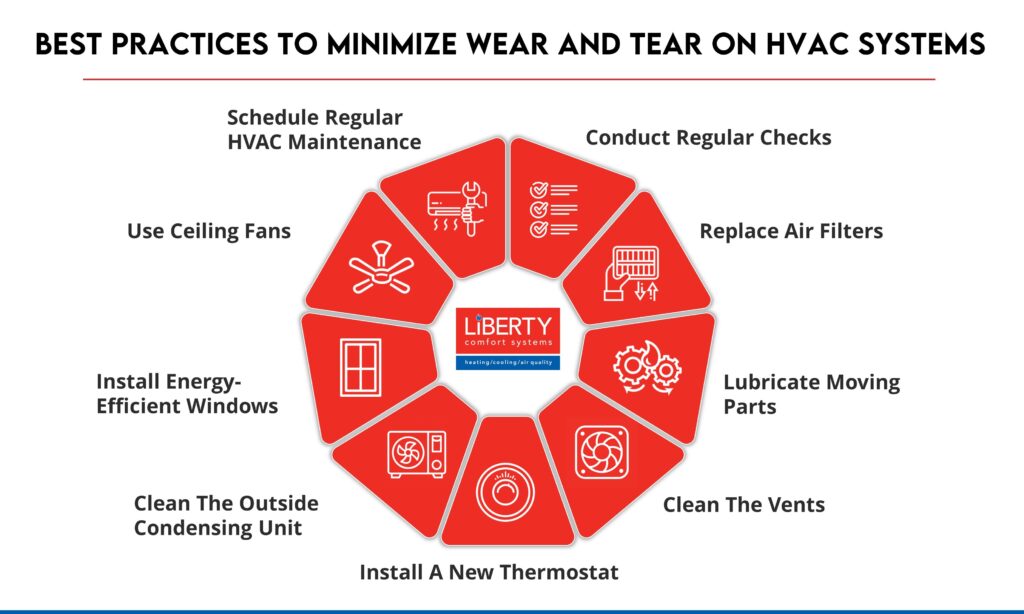
This image is property of libertycomfortsystems.com.
Smart HVAC System Integration
Connecting HVAC Systems to Building Automation
Connecting HVAC systems to a building automation system (BAS) allows for centralized control and monitoring. BAS enables efficient scheduling, optimization, and automation of HVAC operations based on occupancy, temperature, and other parameters. By integrating the HVAC system with a BAS, energy consumption can be effectively managed and optimized for maximum efficiency.
Utilizing IoT for Energy Management
The Internet of Things (IoT) technology offers additional opportunities for energy management in commercial HVAC systems. IoT-enabled devices, such as sensors and smart thermostats, can provide real-time data on occupancy, temperature, and energy consumption. This data can be leveraged to make informed decisions and implement energy-saving strategies effectively.
Implementing Remote Monitoring and Control
Remote monitoring and control capabilities allow facility managers to access and adjust HVAC settings from anywhere, at any time. This not only improves convenience but also facilitates proactive energy management. By remotely monitoring system performance and making necessary adjustments, energy waste can be minimized, and potential issues can be addressed promptly.
Optimizing System Maintenance
Regular HVAC Equipment Inspections
Regular inspections of HVAC equipment are essential to identify potential issues and ensure optimal performance. This includes checking for leaks, loose connections, refrigerant levels, and overall system operation. By identifying and addressing maintenance needs promptly, energy efficiency can be maintained, preventing energy waste and costly repairs.
Scheduled Maintenance Tasks
Scheduled maintenance tasks, such as cleaning coils, lubricating motors, and replacing worn-out components, help optimize the performance and energy efficiency of HVAC systems. Following manufacturer-recommended maintenance schedules ensures that the equipment operates at peak efficiency and minimizes the risk of breakdowns or system failures.
Importance of Cleaning Coils
Dirty coils can significantly reduce the efficiency of cooling and heating equipment. Dust, debris, and other contaminants accumulate on the coils, insulating them and inhibiting heat transfer. Regularly cleaning coils removes these contaminants, allowing for optimal heat exchange and energy efficiency. It is important to clean both evaporator and condenser coils as part of routine maintenance.
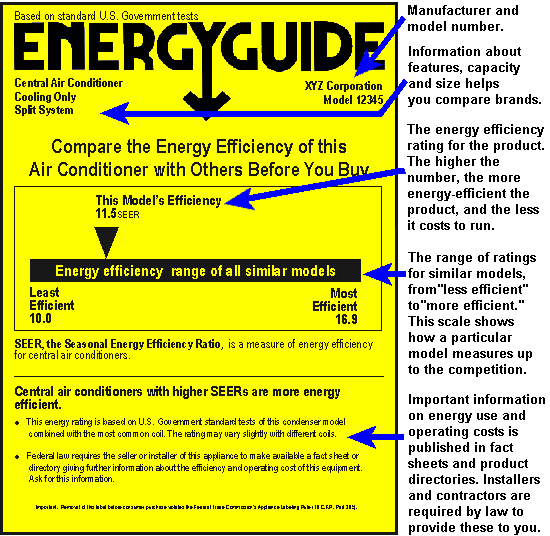
This image is property of www.iconmechanicalinc.com.
Implementing Energy-Efficient Retrofitting
Upgrading to High-Efficiency HVAC Systems
Upgrading to high-efficiency HVAC systems can yield significant energy savings in commercial buildings. Newer systems often feature advanced technologies, such as variable speed compressors, improved heat exchangers, and energy-efficient motors. These upgrades not only reduce energy consumption but also enhance overall comfort and performance.
Enhancing Building Envelope
Improving the building envelope through insulation, air sealing, and efficient windows can drastically reduce heating and cooling loads. By minimizing heat transfer and air leakage, the HVAC system’s workload is reduced, resulting in lower energy consumption. Conducting an energy audit can help identify areas for improvement and guide retrofitting efforts.
Utilizing Energy Modeling Software
Energy modeling software allows building owners and managers to simulate different HVAC scenarios and evaluate their energy performance. By inputting various parameters such as building characteristics, equipment efficiency, and weather conditions, the software can help identify the most energy-efficient system configurations. This enables decision-makers to make informed choices regarding retrofitting or system upgrades.
Monitoring and Analyzing Energy Consumption
Utilizing Energy Management Systems
Energy management systems (EMS) provide real-time monitoring, analysis, and control of energy consumption. These systems collect data from various sources, such as HVAC systems, lighting controls, and power meters, and provide comprehensive insights into energy usage patterns. By identifying areas of high energy consumption, EMS allows for targeted efficiency improvements.
Benchmarking Energy Efficiency
Benchmarking energy efficiency involves comparing a building’s performance to similar buildings or industry standards. This provides a baseline for evaluating energy efficiency and identifying areas for improvement. Benchmarking data can be used to set performance goals, track progress, and prioritize energy-saving initiatives.
Analyzing Data for Continuous Improvement
Analyzing energy consumption data is crucial for continuous improvement and ongoing energy management. By regularly reviewing performance metrics and identifying trends or anomalies, facility managers can uncover opportunities for further optimization. Data analysis can help fine-tune equipment schedules, adjust setpoints, and implement energy-saving strategies to maximize efficiency.
In conclusion, optimizing energy efficiency in commercial HVAC systems requires a comprehensive approach that encompasses temperature settings, ventilation management, airflow control, equipment scheduling, energy recovery systems, lighting controls, smart system integration, system maintenance, retrofitting, and continuous monitoring and analysis. By implementing these best practices, businesses can reduce their energy consumption, lower operational costs, and create comfortable environments for occupants. Investing in energy-efficient HVAC solutions not only benefits the bottom line but also contributes to a sustainable future.





